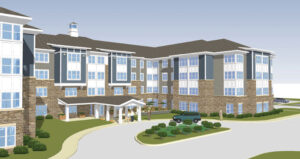The number of occupied units in assisted living is at its highest level ever, according to the National Investment Center for Seniors Housing & Care. The organization released quarterly data on Thursday.
“What that’s telling you is there is definitely demand for assisted living. We’re past the low of occupied units that we had pre-pandemic, and we’ve reached a new high,” NIC Chief Economist Beth Burnham Mace told the McKnight’s Business Daily.
“The story is not there yet [for independent living and skilled nursing],” Mace said, which she said are still shy of their high point.
The senior living occupancy rate increase — the fifth consecutive quarter seeing an increase — is due to a surge in demand that strongly outpaced growth in inventory. Although this boost is good news, the overall assisted living occupancy rate is not back to pre-pandemic levels, according to NIC MAP data.
Although most units are filled, there also has been much sales activity, and the recently purchased communities are not at capacity, Mace said. Occupancy rates consider new inventory, she said.
Quarterly gains, according to NIC:
- Assisted living occupancy increased 1.1 percentage point to 79.7%, up 5.6 percentage points from its pandemic low of 74.1% in the second quarter of 2021, but still below its pre-pandemic level of 84.6%.
- Independent living occupancy increased 0.9 percentage point to 84.7%, up 3 percentage points from its pandemic low of 81.7% in the second quarter of 2021 and still below its pre-pandemic level of 89.6%.
- Skilled nursing occupancy increased 0.8 percentage point to 79.3%, up from its pandemic low of 74% in the first quarter of 2021, but still below its pre-pandemic level of 86.6%.
“We still have a ways to get back to that pre-pandemic occupancy level,” Mace said.
Senior living occupancy is up 4.3 percentage points as of this quarter from a pandemic low of 77.9% in the second quarter of 2021. Mace said that full recovery could take until sometime in late 2023 or 2024.
Although the United States is not officially in a recession, Mace said that the country is heading there. That won’t necessarily affect assisted living very much, however, she said, because occupancy is mainly needs-based.
A more restrictive Federal Reserve monetary policy with more rate increases on the horizon will slow down loan issuance, however, which in turn will slow down the pace of development in the sector, she said.
“The slowdown in construction starts will act as a tailwind and support further gains in occupancy,” Mace said in a statement.






